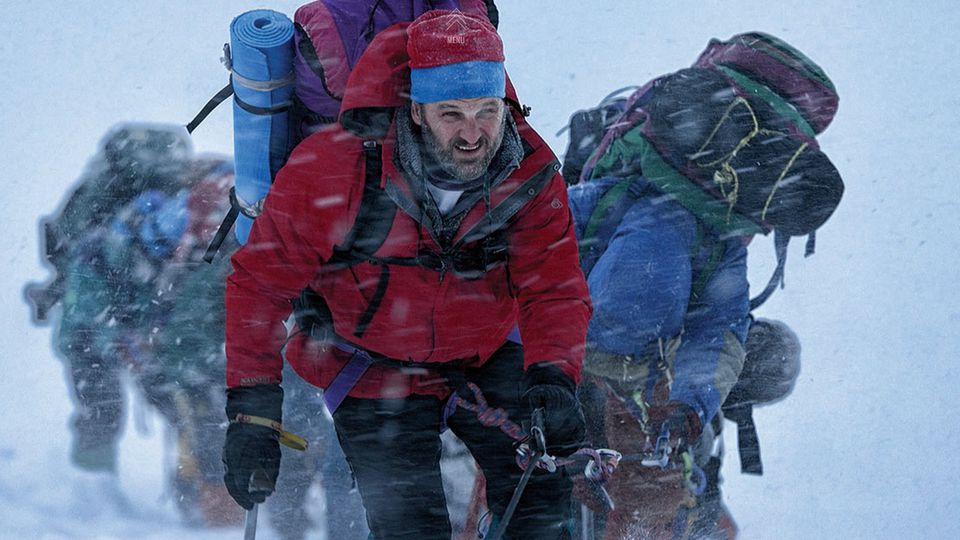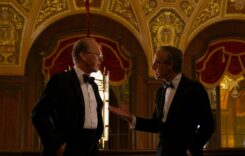SEPTEMBER 29, 2015
There’s a scene early in Baltasar Kormakur’s mountaineering adventure “Everest” set at the base camp where we see members of 20 different climbing teams knocking into one another in an effort to get to the top before Everest’s weather turns. That disarray proves to be an apt metaphor for the script problems that plague this IMAX 3D spectacle.
“Everest” retells the story of the tragic 1996 mountain expedition that was made famous in Jon Krakauer’s best-selling book “Into Thin Air.” This film is not based on that book, although Krakauer is a minor character in “Everest,” and the author has been publicly quoted as being unhappy with how he is portrayed in the film.
The original script is by esteemed screenwriters William Nicholson and Simon Beaufoy, each of whom has previously scripted a Best Picture winner (“Gladiator” and “Slumdog Millionaire” respectively). From those acclaimed writers, we expect more than what this script delivers.
The central character of the film is Rob Hall (Jason Clarke), one of 3 guides working for Adventure Consultants, a New Zealand company set up to take non-professional climbers to the peak. Among the climbers in his care are a Texas thrillseeker (Josh Brolin); an experienced climber (Naoko Mori) for whom Everest is the last of the world’s 7 highest mountains she has yet to scale; and a determined mailman (John Hawkes) who has already tried and failed to reach the top. Add to that Rob’s friendly rival (Jake Gyllenhaal), a guide for American-based competitor Mountain Madness. (Be warned Gyllenhall fans, his role is much smaller than his billing.)
Exhausted yet? We haven’t even gotten to the women on the ground — the base camp director (Emily Watson) in constant communication with the climbers on the mountain, as well as the wives (Keira Knightley and Robin Wright) waiting for any word at home. The film is swimming in major characters and backstory, and it drowns in them before the film ever leaves base camp.
This isn’t the pedigreed adventure film I was expecting. This is “Airport.” This is “The Towering Inferno.” The only thing missing is a love theme sung by Maureen McGovern.
When the climbers begin the upward trek, however, the comparison with those films end. Because next to “Everest,” “The Towering Inferno” is a model of narrative clarity. In those 70s disaster movies, at least, you could tell everyone apart and care about their fates. Here, once the storm starts, the climbers’ faces are covered with goggles, oxygen masks and snow-encrusted beards. All the work in setting up those backstories is out the window because you can’t make out who anyone is. “Was that the thrillseeker who just fell off the mountain?” “Or was it the mailman?” “Please don’t let it be Jake!”
All this talk about the film’s screenplay problems is probably moot, however, because if you’re taking the time to see “Everest” in IMAX 3D, you’re not there for the chit-chat. And in the area of visuals, “Everest” does manage to deliver the goods. Kormakur and his cinematographer Salvatore Totino uses the 3D artfully, usually as a way of suggesting degrees of height and particularly depth. The only scene that is specifically designed to make your stomach flutter comes early in the climb when Brolin tries to climb across a rickety wooden bridge stretched over a chasm. Watch at your own peril.
It’s a special shame that “Everest” has taken this narrative direction, because the film suggests other, more interesting films that could have been made. For example, what are the practical and moral issues for companies that sell dangerous, death-defying adventures to tourists who may be ill-equipped to survive them? That would be a documentary that I would see.
More profoundly, there’s the one-word elephant-in-the-room that “Everest” suggests but never satisfyingly addresses: “Why?”
“Because it’s there” no longer cuts it as an answer in this day and age. “Everest” tries to suggest it’s because somewhere on a bucket list or someone needs a thrill in their lives. But why this? Why would a person leave home and family, spend a small fortune and risk a painful death simply for a thrill?
Had “Everest” focused on this profound question, it not only could have been a great adventure, it could have been a great film.
GRADE: C












